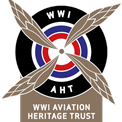One final ‘big push’ was planned by the German High Command in early 1918, code-named ‘Operation Michael’. During the fierce onslaught, the Germans had employed specialist air units to support their Army in the field. Speedy, lightweight, low-flying two-seaters such as the Halberstadt and Hannover CL types continuously carried Allied troops, strafing them with machine gun fire, anti-personnel bombs and grenades. Heavier armoured types, such as the Junkers J.I all-metal biplane, were used for low-level infantry co-operation. These aeroplanes were hugely successful in the role, especially the seemingly impervious armour-plated Junkers that carried out supply drops as well as coordinated artillery fire with their onboard wireless-equipment broadly used by all sides during the war.
By late March, the initial momentum of ‘Operation Michael’ had slowed down; the Allies regrouped, French reservists entered the fray and German troops began to outrun their own artillery. Despite having gained a 40 mile ‘bulge’ into Allied territory, the Germans found it difficult to defend and their Commander in Chief General Erich Ludendorff had been unable to divide the British and French armies. Further Spring offensives were mounted and ultimately checked, leaving German troops exhausted and unable to make any appreciable progress.
